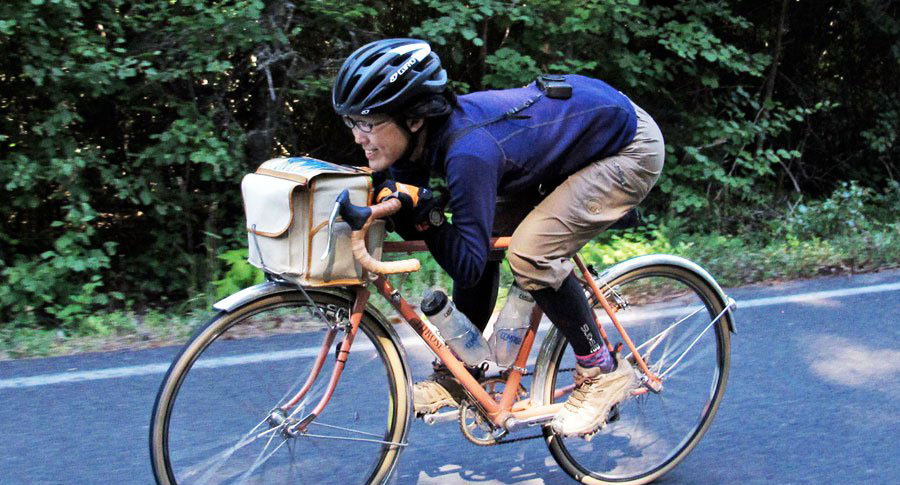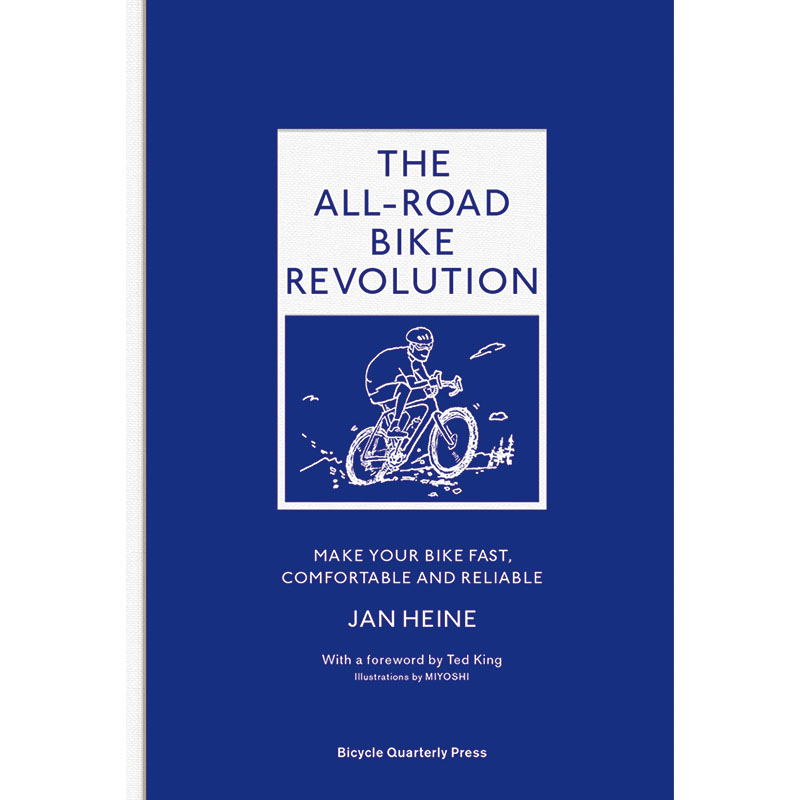Super Tuck vs Aero Tuck
The big news in bike racing is that the UCI wants to ban the Super Tuck position. It’s a position pro racers sometimes use during fast descents, when reducing your wind resistance provides more benefit than pedaling hard. With the UCI decision, many cyclists wonder: How much benefit does the Super Tuck provide? And is there another way to get most of the advantage of the Super Tuck, without breaking the proposed rules?
On a bike, there are two ways to improve aerodynamics in a big way:
• reduce the frontal area
• reduce turbulence by closing the cavity under the rider’s chest.
When I was racing, older riders told me about the Aero Tuck (above demonstrated by Natsuko), which reduces the rider’s width by tucking the arms underneath the body. In recent years, the Super Tuck (below) has become popular. It reduces the rider’s height as they slide off the saddle and crouch on the top tube. Both close cavity under rider’s chest.
Everything else, even aero wheels, has a comparatively small effect. We measured the classic Aero Tuck (top photo) in the wind tunnel and found that it reduced the wind resistance by 32% over riding in the drops. Compare that to just 2-3% for aero wheels. No wonder tucking is so fast!
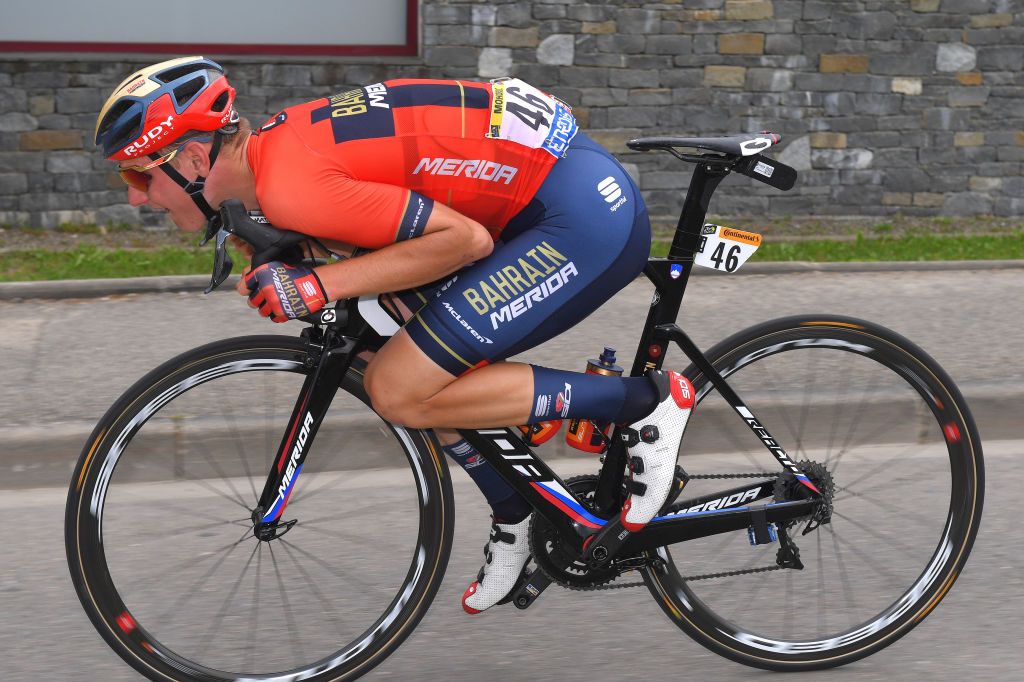
It’s likely that the Aero Tuck (top photo) is more effective on bikes with a relatively high bar position: You can’t get much lower by sliding off the saddle, so tucking in your arms and getting ultra-narrow results in the biggest reduction in frontal area. With a very low handlebar position, the Super Tuck (above) probably provides greater benefits.
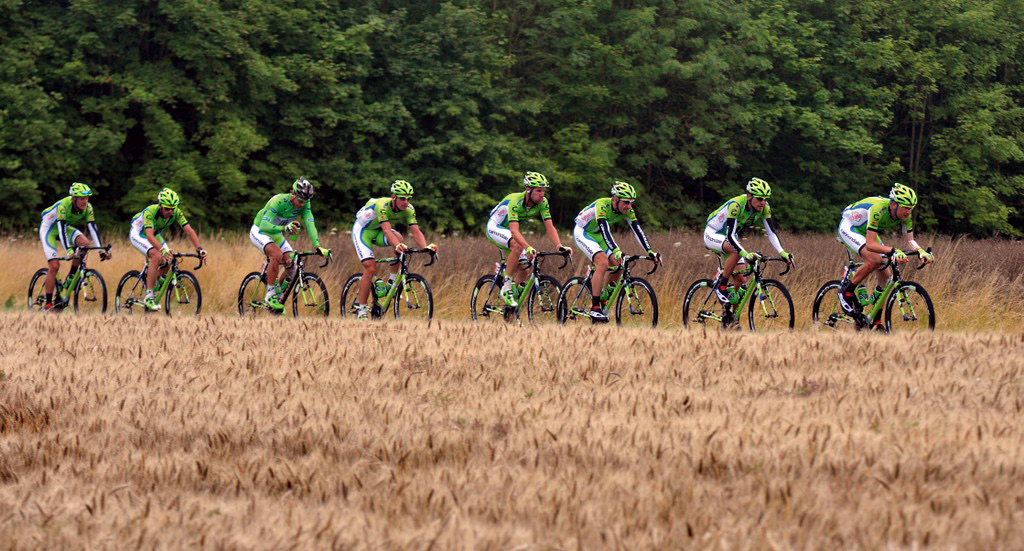
To find out more about the Super Tuck in pro racing, I asked Ted King (leading in the photo above) about his experience.
- Have you used the Super Tuck?
TK: Yes, for sure. This move became common during my time in the pro ranks, so it’s something I adopted, too. At Liquigas-Cannondale, I was teammates with Matej Mojoric (pictured above in the Bahrain Merida kit), who was already a young 2x world champion by the time he graduated to the World Tour. Matej perfected the pedaling Super Tuck and as the rumor went, that move helped him win at least one of those world titles. I remember being at a pre-season team camp and seeing him demonstrate his awkward, yet silky smooth, Pedaling Super Tuck as he flew out of sight. I was entertained by how odd it looked and how effective it was. I can’t say for sure that he introduced it to the World Tour, but Matej was doing it before cameras caught Froome zooming to victory in the 2016 with this move.
- How effective have you found the Super Tuck?
TK: It’s extremely effective. While the Pedaling Super Tuck may be not a gracefully beautiful maneuver on the bike, I think that it’s efficacy is a big part of why we see it being used so often. That is, because it has both a significant and noticeable effect on speed.
- Did you think it is dangerous?
TK: This is why the UCI wants to step in and ban it. The Super Tuck itself isn’t dangerous – you are locked into the bike, so it’s quite stable even when you hit bumps – but it has the potential to be dangerous if something dangerous is to happen. Namely, if something is to get in the way of a rider on a fast downhill, for example a car pulling out, or an animal jumping in the road, or a ball bouncing on course. There’s a fraction of a second lag for the rider to get themselves out of the tucked position – moving forward, then up, then back – and perform an evasive action or grab the brakes. Thankfully this hasn’t been an issue, but my assumption is that the UCI sees the potential for something going wrong, and they’re trying to proactively prevent an injury (or worse) down the road.
- Do you think it should be banned?
TK: It seems a little funny to me to ban it. The slapshot in hockey was once banned, and the slam dunk in basketball was against the rules for ages, but these things — Super Tuck included — bring an exciting element to the sport. I guess for the time being I don’t think a hard and fast rule of banning it is the solution. I think with riders seeing how effective it is, there will be all kinds of ways that riders will bend the rules. Have you seen the superman, for example? That’s far more dangerous, but it’s not a Super Tuck, so is that still legal?!
- Have you also used the more traditional aero tuck, with your bottom on the saddle and your hands next to the stem (making your profile narrower, rather than lower with the Super Tuck)? Moving your hands to the brakes is easier in that position, since you’re still sitting on the saddle...
TK: Yes, I’ve definitely used that trick. It’s certainly more effective than staying in the traditional riding positions. On a modern racing bike, it’s not as effective as the Pedaling Super Tuck. So maybe that’s the goldilocks that the UCI will allow — “aero enough, but not too aero!”
- Thank you, Ted! It’ll be interesting how this all shakes out!
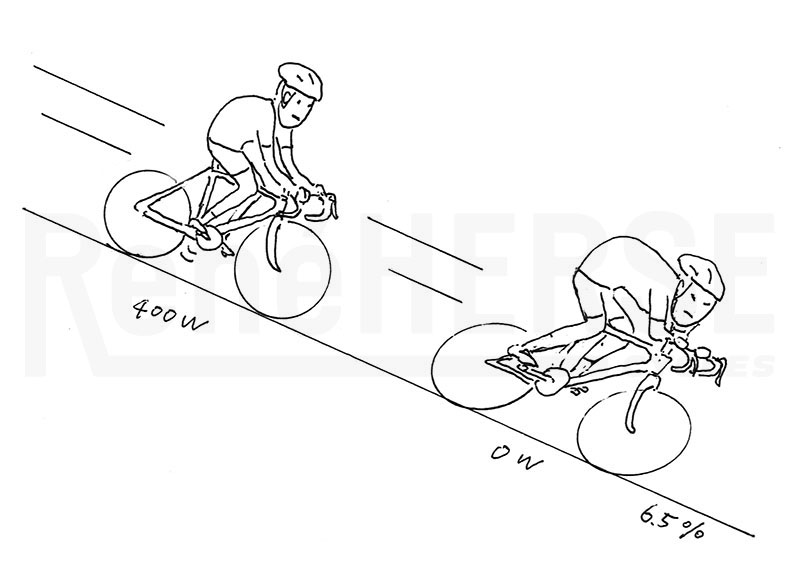
So how fast is the Aero Tuck in real terms? For our book ‘The All-Road Bike Revolution,’ I calculated a typical scenario based on the wind tunnel data: On a 6.5% hill, you have to pedal at 400 Watts to keep up with a rider who coasts in the Aero Tuck. Few riders can pedal that hard for long, and 6.5% isn’t even that steep. Any steeper, and there’s no hope of pedaling hard enough to make up for the lower wind resistance of the Aero Tuck. Plus, you’re resting in the Aero Tuck – albeit not very comfortably! – rather than pedaling hard.
You can confirm this easily on the road. Coast next to a friend who rolls at the same speed. Then get into the Aero Tuck, and you’ll just roll away.
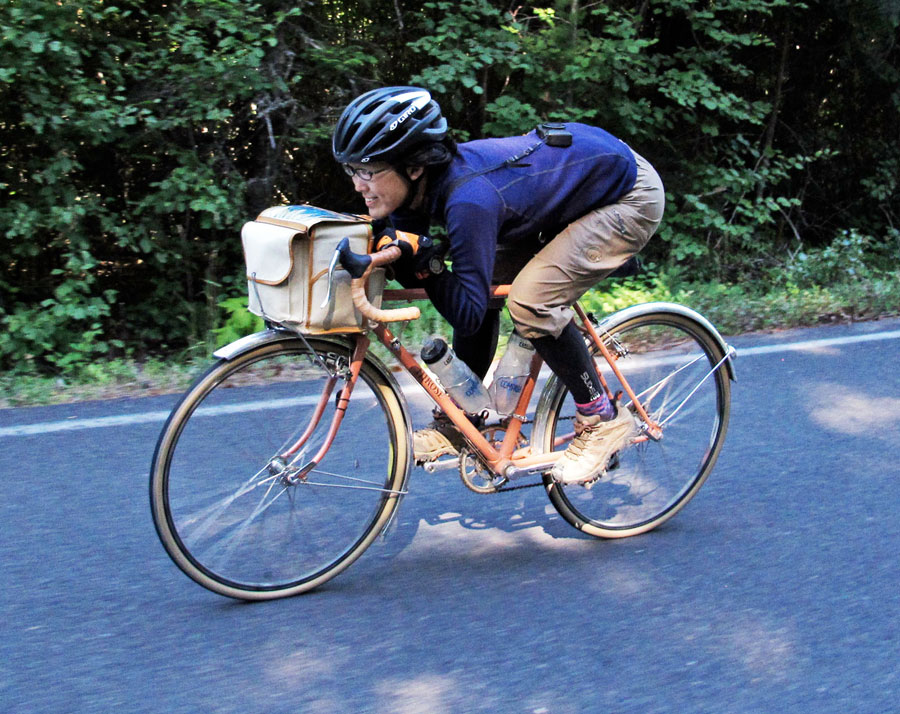
That got me thinking about other ways to improve the aerodynamics. In the Aero Tuck, you sit on the saddle, so you can’t get any lower. And once your arms and legs are touching the top tube, you can’t get narrower, either. But you might be able to improve the airflow over the front of the bike with a small fairing. Surprisingly, a handlebar bag works that way. In the photo of Natsuko above, you can visualize how the bag directs the air around the ‘messy’ area between the rider’s arms and legs.
When I started using Strava, I was surprised that, on my familiar routes, I always reach higher speeds on the descents when I ride my randonneur bikes vs. racing bikes. The racing bikes are equipped with aero wheels, bladed spokes, etc., but compared to the handlebar bag, all these aero components seem to make little difference. I’ve found this to be true on multiple rides, several bikes, different descents. The bike setups (bar height, etc.) are similar, and since I’m in the Aero Tuck, even handlebar width shouldn’t matter. The higher speeds don’t correlate with wind direction or anything else, except whether the bike has a handlebar bag. And it’s significant – about 5 mph (8 km/h) on a 50 mph (80 km/h) descent.
Our wind tunnel tests have shown that the handlebar bag ‘fairing’ only provides an advantage when you get very low, but during a hilly ride like Paris-Brest-Paris, it’s the downhills where aerodynamics matter the most. And that’s where I can get in the Aero Tuck to get the benefit of both the more aero position and the bag’s fairing effect. To maximize this effect, we worked with Berthoud Cycles to make a ‘Rene Herse Special’ bag without side pockets. This reduces the width and turbulence of the bag and make it even more aerodynamic. (That’s the bag I use on my bikes.)
If you’re interested in how riding position, bike setup, clothing, bags, wide vs. narrow tires and drafting affects aerodynamics, check out our new book ‘The All-Road Bike Revolution.’ It looks at everything that makes a bike fast, comfortable and reliable, based on real-world testing, both in the lab and on the road.


